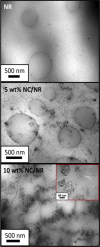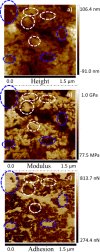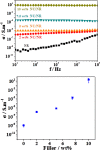Highly Conducting, Sustainable, Nanographitic Rubber Composites
- PMID: 31458465
- PMCID: PMC6641372
- DOI: 10.1021/acsomega.7b01848
Highly Conducting, Sustainable, Nanographitic Rubber Composites
Abstract
Environmentally friendly multifunctional rubber composites are reported. Graphitic nanocarbon (NC) deriving from cracking of biogas (methane/carbon dioxide) and natural rubber extracted directly from the Hevea brasiliensis tree are the two components of these composites produced via latex technology. While maintaining and enhancing the intrinsic thermal and mechanical characteristics of rubber, the presence of NC shows a significant improvement on the electrical response. For a 10 wt % NC content, a 1010-fold increase in conductivity has been achieved with a conductivity value of 7.5 S·m-1, placing these composites among the best obtained using other carbon fillers. In addition, the piezoresistive behavior has also been verified. These promising green composites have a potential use in a variety of applications such as sealing of electronic devices and sensors.
Conflict of interest statement
The authors declare no competing financial interest.
Figures









References
-
- Thomas S.; Stephen R.. Rubber Nanocomposites: Preparation, Properties, and Applications; John Wiley & Sons: Singapore, 2010.
-
- Rippel M. M.; Galembeck F. Nanostructures and adhesion in natural rubber: new era for a classic. J. Braz. Chem. Soc. 2009, 20, 1024–1030. 10.1590/s0103-50532009000600004. - DOI
-
- Rahimi A.; Mashak A. Review on rubbers in medicine: natural, silicone and polyurethane rubbers. Plast., Rubber Compos. 2013, 42, 223–230. 10.1179/1743289811y.0000000063. - DOI
-
- Nallasamy P.; Mohan S. Vibrational spectra of cis-1,4-polyisoprene. Arabian J. Sci. Eng., Sect. A 2004, 29, 17–26.
-
- Azahar N. B. M.; Hassan N. B. A.; Jaya R. P.; Kadir M. A. B. A.; Yunus N. Z. B. M.; Mahmud M. Z. H. An overview on natural rubber application for asphalt modification. Int. J. Agric. For. Plant. 2016, 2, 212–218.
LinkOut - more resources
Full Text Sources
Other Literature Sources

